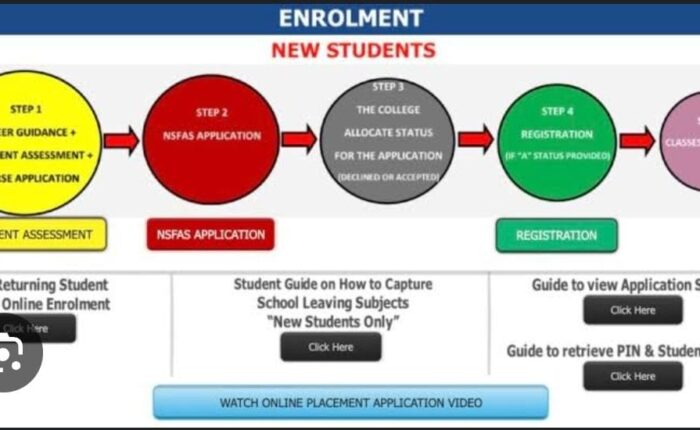Step-By-Step Guide to Applying to South African Universities and TVET Colleges

Applying to universities or TVET (Technical and Vocational Education and Training) colleges in South Africa is at once an exciting yet challenging endeavour. Whether concluding your secondary education or seeking new skills, this sequential outline will simplify navigating the application process.
Initially, explore your possibilities. South Africa boasts 26 public universities with diverse profiles, from traditional to technological to comprehensive. Also consider 50 public TVET colleges offering hands-on technical training ideally preparing brief careers or the labour force. Websites provide authentic program and institution specifics.
Consider institutional criteria. Universities predominantly require a National Senior Certificate and minimum Admission Point Score, occasionally additional submissions or exams depending on major. TVET colleges typically demand the NSC or equivalent, sometimes particular subjects or practical background. Calculate your APS using matric results.
Amass applying materials. Essential documents include: identification or passport certification, authenticated NSC or equal certification, prior academic records if relevant, evidence of any application charge payment if compulsory, further pieces as motivational letters, portfolios, or extracurricular involvement illustrations.
Tip: Ensure any credentials or qualifications are verified and current to prevent holdups.
Step Four: Apply On or Off the Web
Many South African universities and technical and vocational education institutions provide digital portals for applications, though some may accept paper forms still.
Universities: Browse the website of your choice university and adhere to instructions on their application portal. Some use the Central Application Service while others have independent systems.
Technical and Vocational Colleges: Submit through the college website or Central Application Service accessible for technical colleges. You can apply to multiple colleges through this unified system.
Tip: Double-check cut-off dates as they differ by school and program of study. Deadlines must be satisfied strictly.
Step Five: Pay Entry Costs
Certain institutions require a non-returnable submission charge. The amount fluctuates depending on the school and residency status as domestic or international student.
Universities: Typical application fees range from about one hundred to five hundred Rand.
Technical and Vocational Colleges: Application charges are usually lower, though some colleges may not levy any fee at all.
Tip: Safeguard proof of payment in case verification is needed later. Receipts are important records.
Step Six: Submit Your Form
Once you’ve filled out the application form and included all demanded documents, submit before the due date.
Digital Applications: Confirm receipt with an acknowledgment email or reference number upon submission.
Paper Applications: Hand in personally or by post and retain a duplicate for your files.
Tip: Apply in good time to preclude any technical glitches or delays from tardy filings. Comfort margins are wise.
Step Seven: Monitor Application Status
After submitting, you can check status online or contact the admissions department.
Universities: Most universities maintain a web portal permitting status checks.
Technical and Vocational Colleges: Contact the college directly or verify through the Central Application system.
Tip: Stay patient as processing times differ by institution and application volume.
Step 8: Accept Your Offer
Should your application prove fruitful, expect an offer letter detailing next steps. Carefully review instructions and follow to confirm.
Universities may require acceptance fees or program registration.
TVET Colleges: Confirm and complete additional registration as instructed.
Tip: Weigh multiple offers holistically on program quality, cost, and location before deciding.
Step 9: Pursue Funding (If Necessary)
NSFAS supports eligible students at universities and TVET colleges. Search other opportunities from government, private partners, or institutions themselves.
Tip: Submit financial aid applications promptly as resources tend to run out.
Step 10: Organize for Enrolment
With offer acceptance and funding secured (if needed), orientation attendance and course registration with payment finalize preparations. Arrange accommodation and transportation for new cities.
Tip: Stay organized with all deadlines and documents centrally compiled.
Pursuing education in South Africa sets you on the path toward career and learning ambitions. By carefully following this guide, feel confident to smoothly navigate the application with attention to detail and timing.
Remember – preparation, diligence and timely submission yield success. Best of luck on your journey.